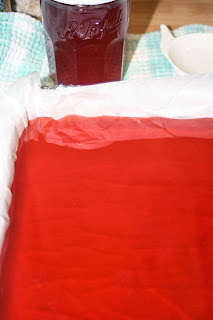One of my favourite things about autumn is that quinces are in season.
Yes, I know, they are ugly and a bit weird. Hard as rocks and completely inedible raw..... but cooked they become the most incredible edible imaginable.
Applying heat to these ugly ducklings transforms them into aromatic jewel toned swans. It is a true culinary magic.
There is an old quince tree in the orchard, and it was laden with fruit. I gave away bags of it to friends and acquaintances. The rest I cooked into jelly and paste.
For days the kitchen - whole house in fact - smelt heavenly.
My hands, however, felt like they had been through a few sessions with the inquisition and lost out.... badly lost out.
There are many tricks and hints on the internet for preparing quince. Before you go ahead and try them out, let me tell you that they DO NOT WORK. Save yourself some heart (and hand) ache. You can thank me later.
The only thing that makes it easier is to wash the fruit in a sink of hot water and let them rest a good half hour before trying to prep them. The water needs to be hot enough that you can just barely put your hands in it. This seems to soften the skin slightly and makes it a bit easier to peel them. Cutting and coring is still hard work, sorry.
To make jelly from quinces is the simplest recipe there is. Quinces are very high in pectin, so they don't need to much heat or sugar to reach a jelling point.
Jelly
First, wash, peel and cut into chunks about a kilo or so of quinces.
Put in large pot with about a cup or so of water (I actually cooked them in a pressure cooker to save time) and bring to simmer. Cook till fruit is rose pink and tender.
Drain off liquid into a measuring jug. Hopefully you have about a litre of liquid. If not rest fruit in a strainer over jug and let all the juice drip out till the fruit pulp is fairly dry. A jelly bag is great for squeezing out the liquid without getting pulp into it (pulp makes the jelly cloudy when it is set). If still a bit short, top up with water.
A litre of liquid needs about 600g of sugar. Put liquid and sugar into a saucpan and bring to boil, stirring frequently. Once setting point is reached bottle and use prefered method of preserving.
Quince Paste
The leftover pulp is now going to be turned into quince paste. You know the stuff that you spend a fortune to buy at the deli.... yes that stuff. It is delicious served with wild boar (or any game meat for that matter!) and most people think it belongs on a cheese board. Personally, I prefer it with meat, and take my cheese plain or with a little salad as the French do.
Place reserved fruit pulp (which looks a bit revolting at this stage - see photo above) into a large saucepan add about 500-600g sugar(depending on sweetness of fruit) and heat. You must stir constantly!!! You want to cook off the remaining moisture and turn it into a claggy, gluey mess.
Once this texture is reached, turn out into a baking paper lined tray and smooth surface.
Place in a slow oven (100celcius) for a few hours till it takes on a solid feel. Think of a rubber ball and you are aiming for slightly softer...lol. You should be able to push on the surface and it rebounds instead of leaving a divot. I leave the oven door slightly ajar so any moisture escapes and it dries faster.
When cool, slice and put into a lined container with a tight fitting lid and put into fridge. Will keep for months if you don't cross contaminate with an unclean knife (yes I am talking about you double dippers who reuse a knife that has been used on something else!).
Perfect for bringing out at Christmas or for gifting to foodie friends and family.
Alternatives
I always add half a lemon to the fruit when I first cook it. There is no need for the lemon, I just like the hint of flavour that it adds and the balance that it brings to the finished jelly and paste. You could add spices to the jelly such as cinnamon etc if you wish to have a real wintery warmth and perfume.
Subscribe to:
Post Comments (Atom)






No comments:
Post a Comment